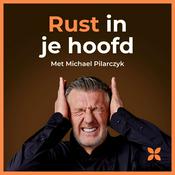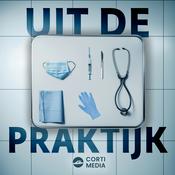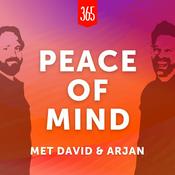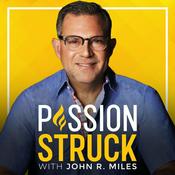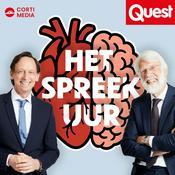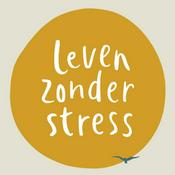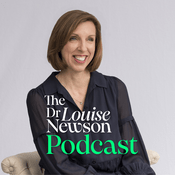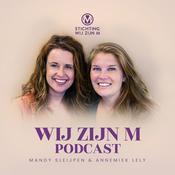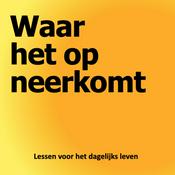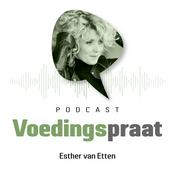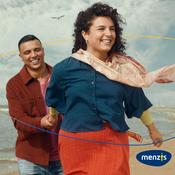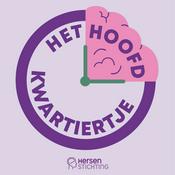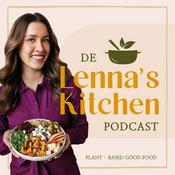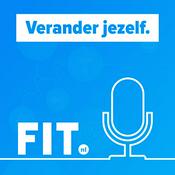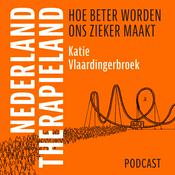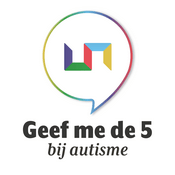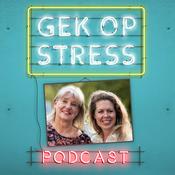Beschikbare afleveringen
5 van 415
- Turn Any Injury Into Long-Term Running Resilience (Brodie on the Strength Running Podcast)Learn more about Brodie's Research Database & AI Assistant 📄🔍For MORE Run Smarter Resources 🏃♂️📚- Including Free Injury Prevention Courses 🩹🎓- The Run Smarter Book 📖- Access to Research Papers 📄🔍- & Ways to Work with Brodie 🤝👟👉 CLICK HERE! 🎉✨This episode is all about turning setbacks into strategy. Brodie joins the show to unpack why injuries are rarely random and how every niggle, flare-up, or full-blown setback carries valuable information about your training, lifestyle, and recovery habits. We explore the big levers that influence injury risk, including sleep, stress, nutrition, footwear changes, and emotional pressure, as well as the subtle patterns runners often miss. Brodie breaks down how to identify training errors, uncover weak links, and understand the early warning signs your body gives long before an injury fully appears.You’ll learn how to approach your running like an ongoing experiment, how to track the right data, and how to use self-awareness to build a more durable, resilient runner’s body. From understanding your personal injury patterns to applying smarter safeguards in your training plan, this conversation teaches you how to turn any injury into long-term progress. Whether you’re currently sidelined or simply want to avoid repeating past mistakes, this episode gives you the mindset and tools to come back stronger than before.Check out the Strength Running Podcast here--------1:05:53
- Re-Run: Predicting Future Injuries & Early Detection with Eric Hegedus (Feb, 2022)Learn more about Brodie's Research Database & AI Assistant 📄🔍For MORE Run Smarter Resources 🏃♂️📚- Including Free Injury Prevention Courses 🩹🎓- The Run Smarter Book 📖- Access to Research Papers 📄🔍- & Ways to Work with Brodie 🤝👟👉 CLICK HERE! 🎉✨Predicting Future Injuries & Early Detection with Prof. Eric HegedusIn today’s rerun episode, Brodie sits down once again with Professor Eric Hegedus—physical therapist, clinician, researcher, and one of the podcast’s favourite returning guests. Eric previously joined us in Episode 186 to dive into return-to-running principles. Today, he’s back to explore one of the hardest and most misunderstood topics in running science:Can we actually predict running injuries?If so, how? And what should runners do with that information?Using insights from his 3-year prospective cohort study, Eric walks us through what physical performance tests can and cannot tell us about injury risk—and why simple movement screens like single-leg squats may be more powerful than we ever realised.We also dive into psychosocial risk factors, early warning signs, modern wearable data, and why injury prediction research is evolving rapidly.What This Episode CoversWhy Eric designed a study to challenge the Functional Movement Screen (FMS)The 15 bodyweight performance tests studied across 360 athletesWhich movement patterns actually mattered for overuse injuriesThe shocking finding: when motor control was considered, past injury stopped predicting future injuryWhy weak glute medius and poor ankle mobility show up repeatedly in injured runnersHow poor movement gives you “less wiggle room” before overloadWhy injury prediction today is no longer just movement → injury, but a multifactorial real-time modelThe four early warning signs of an upcoming injury episodePractical takeaways all runners can apply immediatelyKey Insights & Takeaways1. Movement Quality Matters More Than We ThoughtEric’s research found that poor single-leg or double-leg squat control was strongly associated with future overuse injuries—even more than past injury history. When movement quality was poor, “past injury” no longer predicted new injury. This indicates:Poor motor control = major vulnerabilityRunners with poor control have less buffer when workloads fluctuateRunners who move well have a much larger margin for errorSymptoms of poor control during squats include:Knees collapsing inwardTrunk rotatingHeels liftingUsing the spine instead of hips/knees to descendThese often reflect:Weak glute mediusPoor ankle mobilityPoor neuromuscular coordination after prior injury2. The Tests That Truly MatterEric’s study grouped bodyweight tests into:Active motionMotor controlHip stabilityFlexibilityPowerBut the only category that consistently correlated with overuse injury was:Motor Control: quality of double-leg and single-leg squatThese tests are simple, take 20 seconds, and anyone can self-assess in front of a mirror.3. Early Warning Signs of an Injury (Clear Red Flags)Eric highlights four factors runners should monitor weekly:FatigueStress levelsSleep qualityMuscle sorenessWhen all four trend in the wrong direction, an injury is often imminent.4. Wearables Are Changing Injury PredictionUnlike old studies that tested athletes once per year, modern tech (Garmin, Whoop, Oura, etc.) collects real-time data—giving much stronger prediction models.Right now, Eric estimates we can predict injury with:👉 30–50% confidence Already far better than the past, and improving rapidly.5. Runners Must See Themselves as Whole HumansMechanical load alone doesn't explain injuries. Psychological and lifestyle factors matter just as much:TravelStressPoor sleepRelationship/social strainHigh sorenessReduced recovery behaviorsIgnoring these variables leads runners into repeated injury cycles.🧠 Practical Tips for RunnersFilm yourself doing a single-leg and double-leg squat → check knee control, trunk alignment, ankle mobilityAvoid running when fatigued, highly stressed, poorly slept, or extremely soreBuild glute medius strength (side planks, hip abduction variations)Improve ankle mobility if squats improve with heels elevatedConsider cross-training to break unidirectional overloadTake easy days without guilt—they prevent injury, not reflect weaknessLook at yourself as a whole athlete: body + mind + lifestyle📚 Related Research MentionedHegedus et al. Physical performance tests predict injury in NCAA athletesChris Bramah: Hip drop & knee mechanics associated with running injury (Referenced within conversation)👤 About Today’s Guest: Prof. Eric HegedusEric Hegedus is a professor, clinician, researcher, and highly respected physiotherapist whose body of work spans biomechanics, injury risk, and clinical reasoning. His research is widely used globally in sports rehabilitation and athlete screening.--------1:03:35
- Latest Research: Dynamic Stretching Benefits, Running Economy Insights & The Future of Tendon TreatmentLearn more about Brodie's Research Database & AI Assistant 📄🔍For MORE Run Smarter Resources 🏃♂️📚- Including Free Injury Prevention Courses 🩹🎓- The Run Smarter Book 📖- Access to Research Papers 📄🔍- & Ways to Work with Brodie 🤝👟👉 CLICK HERE! 🎉✨In this month’s Latest Research episode, we break down five new papers added to the Run Smarter Research Library — including big updates on trail running performance, dynamic stretching, running stability, and emerging tendon therapies like ozone, collagen, and PRP.Whether you're a trail runner, road runner, or someone dealing with a stubborn tendon injury, this episode arms you with the latest insights to train smarter and reduce injury risk.In This EpisodeTrail Running: What Predicts Performance & Injury Risk?Paper: Analysis of Factors Influencing Injuries and Performance in Trail Running Key insights:Higher weekly volume, more elevation gain, more interval training, and structured recovery → lower injury riskSleep + passive recovery (massage, mobility, sauna, cold plunges) strongly linked to better performanceTaller runners had slightly higher injury riskPrepared tissue = safer tissueMore training is protective — but only when recovery is adequateDynamic Stretching: Does It Improve Neuromuscular Readiness?Paper: Acute Effects of Dynamic Stretching on Knee Joint Position Sense and Dynamic Balance in Recreational Runners Key insights:A 5-minute dynamic warm-up improved:Joint position senseSingle-leg balanceNeuromuscular “readiness”Runners were more accurate with limb positioning and more stable on Y-Balance TestDynamic Stability & Running Economy: Why Variability HelpsPaper: Runners with Lower Dynamic Stability Exhibit Better Running Economy Key insights:More step-to-step variability (“controlled chaos”) = better running economyStability didn’t change with speed → suggests an individual running “trait”Efficient runners aren’t rigid — they allow micro-adjustmentsOzone Therapy for Tendinopathy — An Emerging Option?Paper: Oxygen–Ozone Therapy in Tendinopathy Management Key insights:May reduce pain, improve function, and support collagen regenerationEarly evidence only; protocols varyAppears promising as an adjunct, not a standalone treatmentPorcine Collagen Injections for Proximal Hamstring TendinopathyPaper: Porcine Collagen Injection Therapy Affects Proximal Hamstring Tendinopathy in Athletes Key insights:Return to sport:Collagen + rehab: 57 daysRehab only: 72 daysGreater functional improvements in the collagen groupStill small, preliminary studies--------43:13
- Exclusive AMA: Stress Fractures, Under-Striding, Strength Sets, & Compression SocksLearn more about Brodie's Research Database & AI Assistant 📄🔍For MORE Run Smarter Resources 🏃♂️📚- Including Free Injury Prevention Courses 🩹🎓- The Run Smarter Book 📖- Access to Research Papers 📄🔍- & Ways to Work with Brodie 🤝👟👉 CLICK HERE! 🎉✨In this special episode, Brodie releases a previously patron-only AMA, answering a wide range of listener questions across injury rehab, running technique, strength training, and recovery tools. Even if you don’t struggle with these issues now, the principles and reasoning in Brodie’s answers provide invaluable insight into smarter training decisions for every runner.🦴 1. Training With Stress Fractures Below the AnkleBrodie breaks down why not all stress fractures are equal and why their location, grade, and healing stage matter. He explains:The difference between high-risk vs low-risk stress fracturesWhy navicular fractures heal slowly due to poor blood supplyThe importance of pain-free loading (during, after, and next day)How to rebuild fitness without stressing the foot: swimming, pool running, upper body strength, knee extensions, seated hamstring curlsA staged return to loading:Offloaded cardio + upper body strengthSeated cycling with low resistanceRowing + progressive cycling loadsStanding lower-limb strength work (squats, lunges, calf raises)Elliptical and increasing time-on-feet toleranceJump progressions → walk/jog programBrodie even maps out a sample weekly schedule for mixed cross-training and strength while rehabbing.🏃♀️ 2. “Understriding” Explained (Gait Analysis Breakdown)A listener asks if it's possible to understride because her gait report showed “reduced overstride bilaterally.”Brodie explains:What overstriding actually isWhy you must contact slightly in front of your centre of massWhy a high cadence (e.g., 188 spm) naturally prevents overstridingWhy “closer to centre of mass than average” is not a problem if you feel stable and uprightWhy there's usually no need to change your technique if you're not braking excessively or injuring yourselfGreat mini-lesson on biomechanics, cadence, and efficient landing mechanics.🏋️♀️ 3. Is One Set Enough in Strength Training?A unique question: Can I just do one set of an exercise and move on?Brodie dives into:What’s required to trigger true adaptationWhy one set rarely provides enough consistent stimulusWhy variety is good—but too much can “spread your progress thin”How to work around boredom or repetition fatigue using:SupersetsCircuitsAlternating upper/lower body between setsHis recommended “big three” for runners:SquatsDeadlifts / Lunges / Step-upsCalf raisesHow minimal effective dosing still works if done consistently and progressivelyPractical, realistic strength advice every recreational runner can apply.🧦 4. Do Compression Socks Actually Help Twingy Calves?Brodie reviews the latest meta-analysis on compression garments and their effects on recovery:Stronger evidence for resistance training recoveryNo significant recovery effects following runningSmall benefits for next-day cycling performanceHis advice:If compression feels nice, it’s fine to use as a short-term comfort toolBUT: don’t rely on it—investigate the cause of recurring calf twingesTraining load balanceSpeed workHillsShoe heel-dropHydration and sodium statusFollow the Recovery Pyramid (Shona Halson):Sleep, nutrition, hydration, stressWater immersionActive recoveryMassageCold/heat, cryo, infraredTop of pyramid: fads like foam rolling, massage guns, compression🎧 Final ThoughtsThis AMA covers a broad range of topics, but the theme is consistent: Use symptoms to guide load, progress logically, and focus on long-term habits rather than quick fixes.--------49:19
- Unlocking Running Potential Through Strength Training (Brodie on The Rambling Runner Podcast)Learn more about Brodie's Research Database & AI Assistant 📄🔍For MORE Run Smarter Resources 🏃♂️📚- Including Free Injury Prevention Courses 🩹🎓- The Run Smarter Book 📖- Access to Research Papers 📄🔍- & Ways to Work with Brodie 🤝👟👉 CLICK HERE! 🎉✨In today’s episode, Brodie is featured as a guest on The Rambling Runner podcast to break down what the science REALLY says about strength training for runners. We dive deep into the research around how lifting makes runners faster, the misconception of “bulking up,” and what runners actually need to be doing in the gym to improve running economy, tendon stiffness, and performance.You’ll learn why traditional lighter, high-rep “runner-style strength work” is NOT what the literature supports — and why shifting toward heavier, low-rep loading can deliver real performance outcomes… even in highly trained runners.We also cover the importance of plyometrics and discuss how combining both heavy strength + tendon-focused plyo creates the biggest return for long distance runners.Whether you’re trying to run PBs, reduce breakdown, or just build a bulletproof body that can run for decades — this episode will help you strength train smarter, not harder.What You’ll Learn:Why strength training improves performance more reliably than it prevents injuryWhat the evidence shows about tendon stiffness, spring mechanics & running economyWhy strength training will NOT make you “bulky” as a distance runnerThe 4 “big rocks” exercises Brodie recommends runners prioritiseWhy plyometrics boost running efficiency when paired with heavy liftingHow to dose reps, sets & rest correctly for actual performance carryover (not just a burn)--------41:36
Meer Gezondheid en fitness podcasts
Trending Gezondheid en fitness -podcasts
Over The Run Smarter Podcast
Expand your running knowledge, identify running misconceptions and become a faster, healthier, SMARTER runner. Let Brodie Sharpe become your new running guide as he teaches you powerful injury insights from his many years as a physiotherapist while also interviewing the best running gurus in the world. This is ideal for injured runners & runners looking for injury prevention and elevated performance. So, take full advantage by starting at season 1 where Brodie teaches you THE TOP PRINCIPLES TO OVERCOME ANY RUNNING INJURY and let’s begin your run smarter journey.
Podcast websiteLuister naar The Run Smarter Podcast, Gezonder met Dokter Ted en vele andere podcasts van over de hele wereld met de radio.net-app
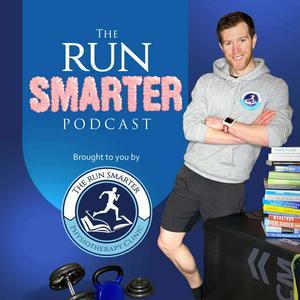
Ontvang de gratis radio.net app
- Zenders en podcasts om te bookmarken
- Streamen via Wi-Fi of Bluetooth
- Ondersteunt Carplay & Android Auto
- Veel andere app-functies
Ontvang de gratis radio.net app
- Zenders en podcasts om te bookmarken
- Streamen via Wi-Fi of Bluetooth
- Ondersteunt Carplay & Android Auto
- Veel andere app-functies


The Run Smarter Podcast
Scan de code,
download de app,
luisteren.
download de app,
luisteren.

